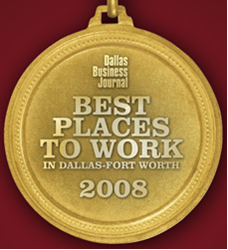See our new forecast on the probability of a global depression.
Continue readingGlobal Pandemic
|
Disastrous pandemics capable of killing many millions have devastated humanity throughout civilization, most famously the Black Death, the Spanish Flu, and recently AIDS. Between 1940 and 2004, more than 300 infectious diseases emerged. |
Threats Are EverywhereContributing factors are causing a heightened risk of pandemics: Evolution of “superbugs” can cause well- controlled diseases to re-emerge in untreatable and deadly forms. Even common bacteria have developed resistance to antibiotics, which are widely overused.[i] See our Wild Card on Superbugs. Although swift response by health authorities has prevented localized epidemics of SARS (Severe Acute Respiratory Distress Syndrome), the disease has not been eradicated. It could reappear at any time. To date, smallpox is the only human infection disease to have been completely eradicated, and even that still exists in at least two highly secure laboratories. As climate change melts ice and permafrost, potentially lethal diseases can re-emerge as viruses and bacteria can survive tens of thousands or even millions of years in such conditions. There already have been isolated cases of infection by anthrax in Siberia, but the real fear is that re-emerging pathogens might cause a global pandemic. [ii] Households are breeding grounds. Scientists have found that MRSA —methicillin resistant Staphylococcus aureus—best known for causing catastrophic hospital infections, originated in homes in northern Manhattan. Doctors hope this knowledge will lead to new ways of controlling major outbreaks. Speed of transmission is increasing. With millions traveling on airplanes, an aggressive virus (with an incubation period typically of a few days) could be on every continent within 36 hours. A combined avian flu virus and human flu virus could create a pandemic as lethal as the Spanish Flu of 1918. |
|
Stored viruses could be accidentally released, and terrorists could unleash deadly viruses as weapons. In 2004, 3,700 test kits of the Asian Flu virus were spread around the world from a US lab. Spores of weaponized anthrax were accidentally released from a military facility in the Soviet Union. An unknown virus that catches the global health community off-guard may spread faster than a vaccine can be created. Economics may hinder vaccination in impoverished countries. [iii] The urgency of the problem is creating solutions.
Most Likely ForecastTechCast Experts think this is a major danger and the results would be devastating. Millions are dying now and several major diseases are active and pose serious threats: AIDS Will Kill Millions The AIDS virus alone is expected to kill almost 150 million by 2025. Ebola Outbreak Over 4,500 people have died of the disease in central Africa, and the World Health Organization warns that there could be over 6 million infections by 2015. Tuberculosis The World Health Organization estimates about 310,000 cases of multidrug-resistant tuberculosis worldwide in 2011. Spanish Flu The Spanish Flu virus killed approximately 50 million people in 1918–1919. (Emerging Infectious Diseases) Pneumonia WHO warns that pneumonia will again become a feared killer if urgent action is not taken to preserve the power of current antibiotics. Our experts estimate a 41 percent probability a pandemic devastates a major region, destabilizing global society. They rate the impact -5 on our -10 to +10 scale, indicating severe losses. Impacts and ImplicationsThe major impact is that a global breakdown is possible. Aside from incalculable deaths, economies could come to a halt, as seen in the 2002 SARS outbreak in Southeast Asia, which required a US$1.5-billion rescue. Transportation, power, and most aspects of daily life could also be devastated by a lack of healthy workers.Many experts consider a global pandemic to be among the biggest health threats, if not the biggest. Evidence suggests global pandemic influenzas are a regular occurrence, and one is likely to cause millions of deaths even with some antiviral medications available. However, a global outbreak of disease would be likely to bring a major influx of money into medical research, advancing our understanding not only of the specific illness but of the underlying mechanisms of pandemic. The US Food and Drug Administration has only approved two new classes of antibiotics since 1998. Some researchers thus are setting their sights on what they see as a more readily attainable goal: to combine existing drugs into more effective therapies. Some of these funds could be expected to go to the less developed nations, improving healthcare in regions where disease spreads most easily. |
[i] US Centers for Disease Control and Prevention, Jun 17, 2016
[ii] BBC, May 4, 2017
[iii] Stefanakis, R., et al. PLoS “Neglected Tropical Diseases,” 6(10)
[iv] The Guardian, Oct 23, 2017
[v] UpToDate, Jun 9, 2017
[vi] Fusion, Mar 18, 2015
Democratic Enterprise
The financial crises that hit the world in 2000 and 2008 raised serious doubts about the moral and practical failings of capitalism. The yawning gap between rich and poor and neglected social problems like climate change have raised serious questions about the profit-centered business model. Critics from Bill Gates to the Pope have called it a “moral crisis of capitalism.” Repeated failures could discredit the profit-centered model of business and shift to a new business paradigm, much as the fall of Communism gave way to free markets. [1]
Nobel economist Joseph Stiglitz wrote, “The financial collapse may be to markets what the Berlin Wall was to Communism.”
A study by Deloitte finds that 60-80 percent of Millennials want to work for companies with a strong social purpose. A poll found that 51 percent of Americans age 18-29 do not support capitalism and only 42 percent think it is a good economic system. [2]
Institutional Investors Laurence D. Fink, founder and CEO of BlackRock, which holds US$6 trillion in investments, told 1000 of the world’s largest corporations:
“Society is demanding that companies… serve a social purpose… every company must not only deliver financial performance, but also show how it makes a positive contribution to society.”
Jeffrey Sonnenfeld, a senior associate dean at the Yale School of Management, said. “It is huge for an institutional investor to take this position across its portfolio.‘‘ He said he’s seen “nothing like it.” The New York Times called it a “watershed moment … that raises questions about the very nature of capitalism.” [3]
Many corporations are making the transition to a quasi-democratic form of business that includes social responsibility, ethics, the triple bottom line, employee engagement, community relations, equality and diversity, environmental management, and other progressive practices that we call “democratic enterprise.”
Ideally, the focus is on forming collaborative partnerships with investors, employees, customers, business partners, and the public to solve complex problems. Collaborative problem-solving goes beyond “doing good” to create value, better serving economic goals as well as social needs.
Studies show that managers realized higher financial gains when focusing on stakeholders rather than on profit alone. Some claim companies that have a social purpose, high customer satisfaction, and strong employee involvement outperformed others by 10 to 1. Having women in corporate leadership is also found to improve performance, largely because women excel at building effective working relationships.
Jack Welch, the former CEO of General Electric who gained fame for pushing the primacy of profits, acknowledged “Shareholder value is a result, not a strategy. Your main constituencies are your employees and customers.” [4]
New Business Paradigms
Various alternative models of business and economics are appearing around the globe to challenge the old “Capitalist” form of business.
Fortune 500 Over 80% of Fortune 500 companies now publish Corporate Social Responsibility reports, covering issues like governance, community and partnerships. The editor of Fortune said: “an ever-growing group of business leaders … are building efforts to address social problems … Companies are moving beyond fuzzy notions like sustainability and corporate citizenship to making meaningful social impact central to how they compete.” [5]
United Nations The UN Global Compact is an association of businesses committed to universally accepted principles in human rights, labor, environment, and anti-corruption. The association includes over 13,000 organizations from more than 145 countries currently, although growth seems to have leveled off over the past couple of years. [6]
Coop Movement The International Co-operative Alliance represents the global cooperative movement, with 284 organizations across 95 countries.
B Corporations This group of 2,000 corporations across 50 countries focuses on solving social and environmental problems. Unlike traditional businesses, they meet comprehensive and transparent standards of social performance.
Benefit Corporations The Benefit Corporation goes beyond the B corporation to make its status legal. California and another 26 American States recently enacted laws requiring Benefit Corporations to provide a “public benefit,” be governed to serve all stakeholders, assess social and economic performance annually, and to operate transparently.
Business for Social Responsibility This global network of 250+ companies, thought leaders, and stakeholders shares best practices and forges new relationships for innovative solutions. [8]
Change is Hard
The obstacles are enormous, of course. Change is hard, so bold leaders are needed to take on this difficult challenge. Some countries have cultures that are committed to traditional forms of “capitalism” focused on profit and the rights of shareholders, and they are likely to resist the difficult changes that are involved.
Shareholders legally own a corporation, which tends to stress the central role of profit. In fact, shareholders can sue if not satisfied that management is doing everything within reason to maximize their profit. However, some corporations are learning to fight back and are in turn suing their shareholders. A growing number of nations and US states now recognize legal rights of stakeholders other than shareholders. [9]
The possibility of takeover has traditionally forced firms to focus on short-term gains to avoid losing capital as their stock drops under threat of being absorbed by another company. The democratic enterprise offers the possibility of resolving this problem by having stock held by stakeholders (employees, clients, etc.) who are interested in the long term.
Collaboration is more time-consuming and difficult than autocratic leadership, and it may fail or mire business with internal politics. The intention may be good, and some firms may thrive, but there is a serious risk of wasted time, endless conflict, and rising costs with democratic processes.
Few present business leaders seem able to make this change, and a new generation of executives less wedded to tradition may be required to spearhead the transition. Forming working relationships is inherently a political act, so managers must adapt by developing political skills. It requires a more challenging form of “political” leadership and depends on stakeholders being receptive to partnering.
Most Likely Forecast
A robust leading edge of progressive business firms and practices have long thrived around the world: Saturn, Johnson & Johnson, Nucor in the US; the Mondragon in Spain; labor participation in Germany; self-management in France; Japanese and Indian firms have practiced various forms of collaborative management for years. Recently, “Conscious Capitalism” has been advocated by John Mackey, the CEO of Whole Foods. [10]
These “democratic” practices are usually relegated to the margins of business culture, but they are more productive than traditional corporate doctrines and may now be moving into the mainstream.
The TechCast Global Brain Trust of experts collectively estimate a roughly 30 percent probability that mainstream business shifts to collaboration with workers, customers, governments, and other stakeholders in the next decades. Although their confidence is relatively low, they estimate a big positive impact, which also suggests the big potential such an historic change could present.
Impacts and Implications
It is hard to think of a more wide-ranging positive impact. A democratic form of enterprise would spur cooperation throughout the social order, relieve government of burdensome responsibility, and reduce the risk of market volatility. Generally, it would encourage a more collaborative society
Business is a powerful institution that sets the character of a society, so this shift to more equitable and more productive paradigm could have a profound impact on economics and civilization itself. Corporations practicing democratic enterprise may prove better at competing in a market economy, and change societies for the better. They could serve as a model of cooperation
Because business firms would be controlled by their stakeholders, they would “internalize” social impacts and reduce the cost of government regulations and the bureaucracy needed to enforce them.
Gaining the support of all major constituencies would reduce the risk of labor conflict, cutthroat competition, swings in consumer loyalty, unexpected regulatory change, and other disruptive factors.
[1] Christian Felber, Moral Crises That Have Resulted from Free Market Capitalism (Zed Books, 2015)
[2] Fortune, Jun 1, 2016
[3] New York Times, Jan 15, 2018
[4] Harvard Business Review, Apr 4, 2013
[5] Fortune, Sep 1, 2016
[6] UN Global Compact, Mar 27, 2017
[7] B Corp, Mar 27, 2017
[8] BSR, Mar 27, 2017
[9] Investopedia, Feb 23, 2017
[10] John Mackey, Conscious Capitalism, 201
Inequality
Throughout the industrialized world, the rich are getting richer and the poor and middle class relatively poorer. This trend has accelerated in recent years and there is a broad consensus that severe income inequality undermines the stability of societies. Although tolerance for inequality varies from one country to another, depending on other factors that promote social cohesion, research shows that a crisis or social breakdown is near when the top income decile pockets 65 times as much of the country’s total household income as the bottom tenth. Many countries are at or approaching these dangerous levels of inequality. Worldwide, the wealth differential between the top and bottom tenths of society has long exceeded the level at which a social crisis would be inevitable.
Growing Risk of Instability
In advanced the economies over the past several decades, the incomes of the wealthiest 1 percent have grown three times faster than the rest of the population, and the wealth of the top 1 percent is now greater than the combined wealth of the remaining 99 percent. This trend has accelerated rapidly—by 1 percentage point per year—between 2010 and 2015. The bottom 50 percent of the world’s population has less than 1 percent of the total wealth. [1]
The World Economic Forum (WEF), concurring with many other organizations, has described severe income inequality as the biggest risk facing the world. WEF founder Klaus Schwab has observed, “We have too large a disparity in the world; we need more inclusiveness… If we continue to have un-inclusive growth and we continue with the unemployment situation, particularly youth unemployment, our global society is not sustainable.”
The rise of giant tech platforms appears to concentrate wealth even more. Early evidence is Oxfam’s research finding that 8 wealthy individuals own 51% of the world’s wealth (as much as 3.6 billion people). Three of those 8 men are the founders of 3 of the giant tech platforms: Amazon, Microsoft and Facebook. If these platforms evolve into the economy’s “digital infrastructure” for the coming Digital Economy, they are likely to funnel the world’s wealth to themselves for decades.
Taxation and other policies could reduce inequality. Yet, measures such as tax cuts for the rich, shrinking welfare programs in countries such as the US, and business-friendly Supreme Court decisions are making it worse.
Most Likely Forecast
According to the World Economic Forum’s indices, median income has declined by 2.4 percent between 2008 and 2013 across the 26 advanced economies where data is available. [2]
An analysis shows that the richest five people in the world own as much wealth as the poorer half of the world’s population. According to Oxfam, the richest 1 percent of the global population has more wealth than the remaining 99 percent. [3]
The percentage of global wealth accumulated by the top 1 percent of the population has increased rapidly in recent years, from 44 percent in 2010 to over 50 percent in 2016.
The TechCast Expert panel estimates that income inequality is likely to produce a global social crisis by about 2024 +/- 1 year. They are also 60 percent confident in this forecast.
Strategic Implications
The stability of a democracy is based on the shared trust in institutions and belief that decisions made at all levels of government will create an environment of fairness and equality of opportunity. When the wealth distribution gets too far out of line, it undermines that belief. Excessively high levels of inequality have historically destabilized societies and resulted in widespread violence. Nobel Peace Prize-winning economist and entrepreneur Muhammad Yunus has called the growing inequality a “ticking time-bomb.”
Policies for reducing inequality are relatively well understood and widely supported. For example, the International Monetary Fund has repeatedly encouraged governments to implement a wide variety of inequality-reducing policies. Despite some evidence that inequality may not have grown as severe as it seems, there is widespread support for policies that would mitigate the problem. [4]
[1] World Economic Forum, Jan 16, 2017
[2] New York Times, Jan 16, 2017
[3] Common Dreams, Jun 12, 2017
Global Ethics
People Uniting the Globe
A growing number of influential people advocate a new global ethics that could unify people under a common set of values and beliefs. Religions are largely based on common moral principles, corporations profess adherence to ethical codes, and most individuals believe in some set of universal values, ethics and morals. This would be highly significant because religion and spirituality are the most powerful forces governing life, irrespective of geography. A system of global ethics could help to unify the world.
Numerous organizations, websites, forums, blogs, and publications are devoted to the message of harmony and peace. Examples include the Institute for Global Ethics and the School of Life, which is a global secular organization dedicated to developing emotional intelligence. Religions for Peace is one of the first organizations to form a large alliance of religious leaders to fight poverty, save nature, and prevent war. The International Association of Religious Freedom is a century-old organization that meets annually to integrate religious thought and practice. The World Council of Religious Leaders announced a “Commitment to Global Peace” intended to counter conflict, poverty, and protect the environment.[i]
Major world leaders, including the United Nations and the Dalai Lama, have shown support for rights and freedoms that should be universally observed. His Holiness, the Dalai Lama, declared, “All major religious traditions carry basically the same message of love, compassion, and forgiveness … that should be part of our daily lives. But grounding ethics in religion is no longer adequate. This is why I am increasingly convinced that the time has come to find a way of thinking about spirituality and ethics beyond religion altogether.”
Pope Benedict XVI declared that globalization requires a “common code of ethics,” based not only in agreements but in natural law, to combat poverty and ensure peace. UN Deputy Secretary-General Jan Eliasson has stated ‘No-one left behind’ is the underlying moral code for the 2030 Sustainable Development Agenda, which has been adopted unanimously by 193 Heads of State. [ii]
Developing a broadly accepted ethical code may not be as difficult as it appears. Bioethicist David Resnik identified eight basic ethical principles accepted by most of the world’s societies: [iii]
- Non-maleficence: Do not harm yourself or other people.
- Beneficence: Help yourself and other people.
- Autonomy: Allow rational individuals to make free and informed choices.
- Justice: Treat people fairly: treat equals equally, unequals unequally.
- Utility: Maximize the ratio of benefits to harms for all people.
- Fidelity: Keep your promises and agreements.
- Honesty: Do not lie, defraud, deceive, or mislead.
- Privacy: Respect personal privacy and confidentiality.
Human Nature Poses Obstacles
The greatest obstacle to developing a global ethical code is human nature.Many individuals are determined to find faults in other religions out of the belief that theirs is the one true path to salvation. Politicians, and even some religious leaders, often seek to build their own power by playing on their constituents’ fears about other religions. Illiteracy encourages superstition, narrow mindedness, blind faith, and perhaps even terrorism.
It’s also possible that a common ethical code would constrict individual thoughts and beliefs. It would mean little if not enforced. A universal code might conceivably invite the rise of absolutism on a much wider scale than is now possible. The spread of a global ethical code could inspire opposition by people who feel it threatens their beliefs or positions. This could encourage political instability and growing violence.
Most Likely Forecast
With little to guide a forecast, it is useful to recognize that Bill Halal’s new book, Beyond Knowledge. Bill finds that a “mental/spiritual revolution” to some form of global ethics is almost inevitable if the world hopes to survive the global crises that threaten the planet. A strong majority of the public is fearful that climate change, mass unemployment and other elements of the Global Mega Crisis are heading toward disaster unless the world makes major change in mindset.
TechCast’s experts suggest that 30 percent of the world’s people will adhere to a common set of ethical principles around 2030, and they have high confidence that this will have a very positive social impact. This seems a reasonable forecast but it could also happen earlier.
Strategic Implications: A More Peaceful World
A common global ethics would create the foundation for a functioning world system that contains conflict and promotes well-being.Without a sense of worthy goals and purpose, no community can evolve and survive. Development of a global ethical system may help to provide them.A higher level of global consciousness would make it easier to meet the enormous intersecting crises of climate change, sustainable energy, financial instability, conflict, and war.
[i]Institute for Global Ethics, Sep 4, 2017. School of Life, Sep 4, 2017. Religions for Peace, Sep 4, 2017. International Association of Religious Freedom, Sep 4, 2017.
[ii]Catholic News Agency, Jul 4, 2016. UN, Jan 13, 2016.
[iii]“Some Definitions of Key Ethics Concepts“






